- Building strong and well-defined rear deltoids isn’t just about aesthetics; it’s also about enhancing your overall upper body strength, posture, and shoulder stability.
- Targeting the rear deltoids can be a challenging endeavor, especially if you’ve struggled with issues like shoulder mobility and biomechanics.
- That’s precisely why we’ve compiled this list of effective exercises to intensify muscle activation and overcome these hurdles, ensuring your rear deltoids, as well as the surrounding back muscles, get the attention they deserve.
- So, if you’re ready to take your shoulder workouts to the next level in your bodybuilding journey and experience real results, let’s dive into these tried-and-true exercises and variations that will transform your approach to building a stronger, more balanced upper body.
- Pay close attention to your arms, elbows, and shoulder width as you work on targeting the rear deltoids and the area around the shoulder blade.

The Anatomy of the Rear Deltoids:
- For a physique that turns heads, it’s essential to give your shoulders prime time. Within the shoulder muscles, the rear deltoids are crucial for achieving a balanced and strong upper body.
- To effectively work out and grow these muscles, you need to first understand their anatomy.
- The rear delts, often known as the posterior deltoids, make up one of the three unique sections of your shoulder’s deltoid muscle group.
- These muscles have an important function in enabling the movement and stability of your shoulder joint.
- Location: The rear deltoid muscles are situated on the upper back, forming the rear part of the shoulder’s rounded contour and contributing significantly to its overall appearance.
- Muscle Fibers: The rear deltoids consist of muscle fibers originating from the spine of the scapula and inserting into the back of the humerus. Because of their attachment points, the rear deltoid muscles mainly help to move the arm horizontally backward away from the body.
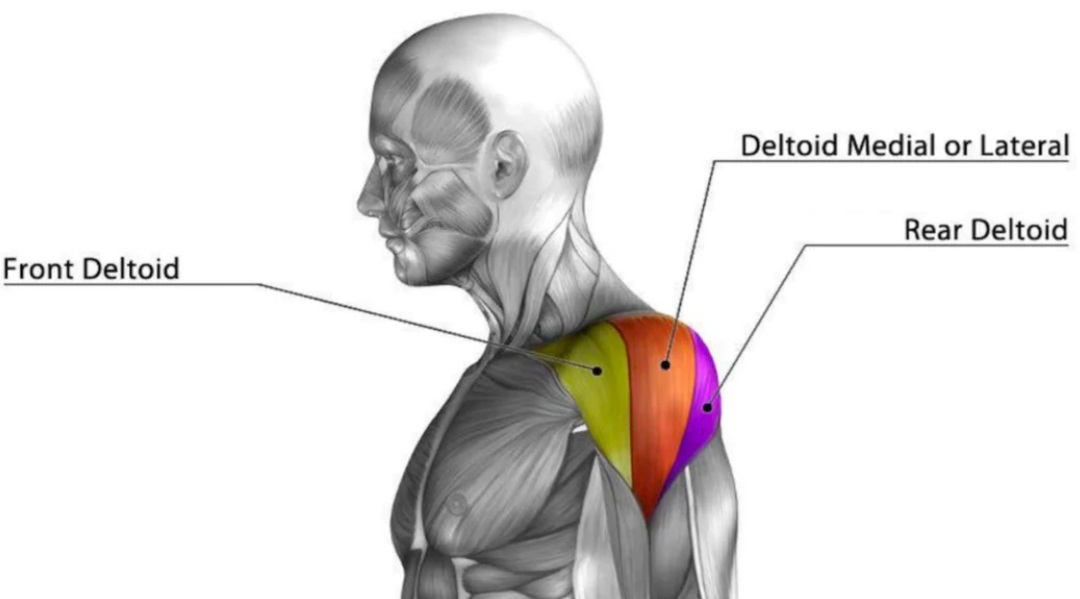
Functions of the Rear Deltoids:
- Shoulder Retraction: The primary role of the rear deltoids is shoulder retraction. This muscle group allows you to pull your shoulder blades together, promoting good posture and providing stability to the shoulder joint. Shoulder retraction is crucial in various activities, including weightlifting, swimming, and rowing.
- Shoulder Extension: The rear deltoids also contribute to shoulder extension, allowing you to move your arm backward. For workouts like doing bent-over rows or rear delt flyes, being able to move in this way is crucial.
It’s important to note that the rear deltoids often receive less attention than their anterior (front) counterparts. To maintain balance and prevent shoulder imbalances, prioritize rear deltoid training in your workouts.
Undeveloped Rear Deltoids: A Common Occurrence
- In the realm of fitness and muscle development, it’s all too common for certain muscle groups to receive the spotlight while others remain hidden in the shadows.
- One such hidden issue is the prevalence of underdeveloped rear deltoids.
- While these muscles may not be as prominent as the pecs, biceps, or quads, their significance cannot be overstated.
- A significant number of individuals are walking around with underdeveloped rear deltoids, and they might not even be aware of the potential consequences.
- Discomfort and Pain: As the rear deltoids are responsible for maintaining proper shoulder alignment and preventing muscle imbalances, their underdevelopment can lead to discomfort and pain. This discomfort may manifest as persistent aches in the shoulder region, particularly during movements that engage the shoulders, such as lifting, pushing, or pulling.
- Postural Problems: Weakening the rear deltoids can also contribute to poor posture. The shoulders may round forward, leading to the classic “rounded shoulders” appearance. This not only affects your posture but can also result in long-term discomfort, neck strain, and potential spinal alignment issues.
The Top Five Rear Delt Exercises
Exercise 1: Unnamed Barbell Movement
- The first exercise on our list may seem unconventional, and its name might be a mystery to many. This movement involves placing a barbell behind you, bending at the waist, and flexing straight back.
- What makes this exercise stand out is its adaptability – even if you happen to go a bit too heavy, you’ll still experience a fantastic connection with your rear deltoids.
- Ideally, using lighter weights and flexing straight up, just above your glutes, is recommended, but the exercise works effectively either way.
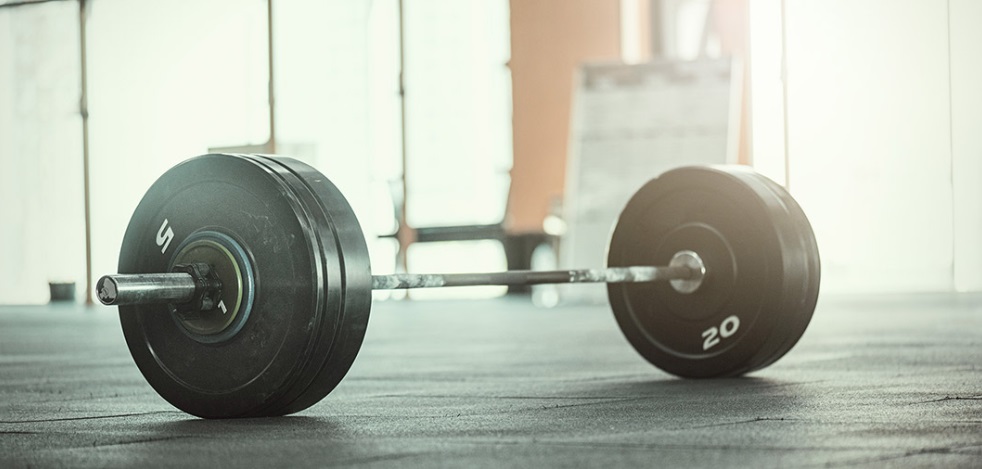
- Personalized Grip Preferences: One unique aspect of this exercise is that hand placement is entirely up to personal preference. Whether you opt for a pronated (overhand) or supinated (underhand) grip, both have their advantages. This adaptability allows you to tailor the exercise to your comfort and body mechanics, ensuring you get the most out of it.
Exercise 2: Incline Rear Delt Flyes
- When it comes to sculpting your posterior deltoids, the incline rear delt flyes exercise stands out as a top-tier choice.
- As you perform incline rear delt flyes, you’ll notice the unique way it engages and challenges your posterior deltoids.
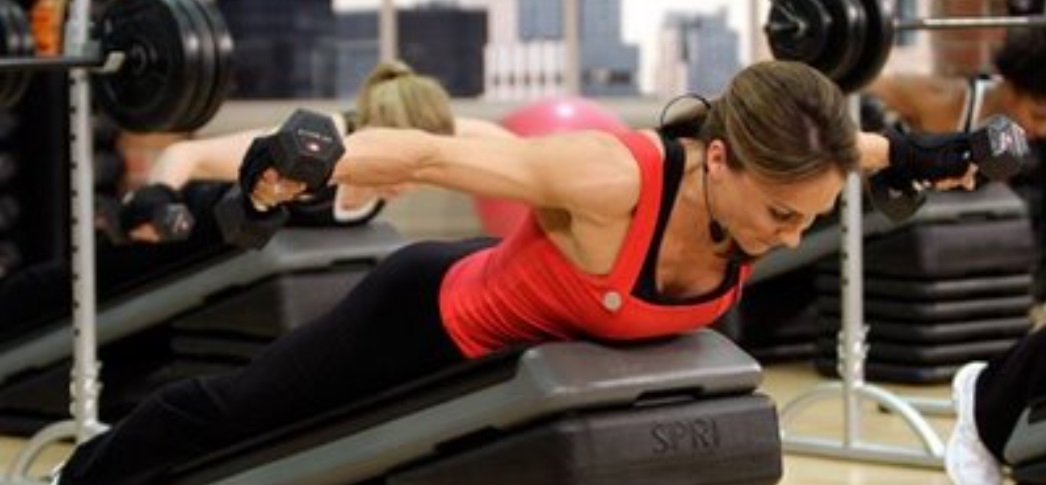
- But this move works so well because it’s like you’re lifting a light weight up and circling it around. The controlled, dynamic movement mimics the action of lifting a lightweight to the side and then circling it around. This similarity to arm circles greatly enhances the growth of your posterior deltoids.
Full Range of Motion:
- The exercise encourages a full range of motion for your posterior deltoids. This range allows you to target and challenge these muscles comprehensively, ensuring no part of them goes unnoticed.
- Incline rear delt flyes are outstanding for their capacity to precisely target your posterior deltoids.
- The rear delt fly targets your back shoulders directly so it builds them up and makes them stronger.
Exercise 3: Rear Delt Dumbbell Raises
- For people who struggle to maintain focus during their gym workouts, Rear Delt Dumbbell Raises presents a perfect solution.
- This exercise offers simplicity and effectiveness, allowing you to target your rear deltoids without getting distracted.
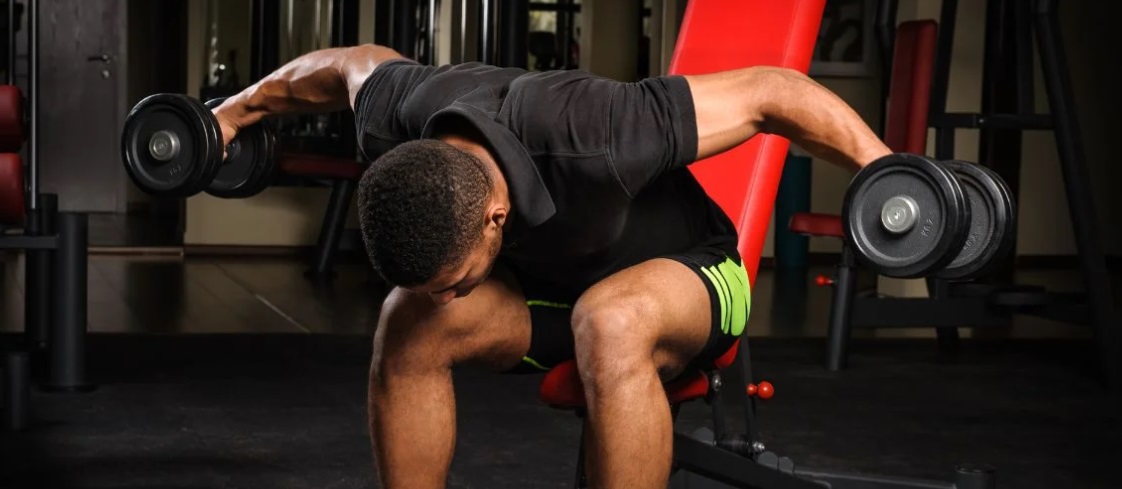
Mastering Form for Rear Delt Dumbbell Raises
- To ensure you get the most out of Rear Delt Dumbbell Raises, it’s essential to master the correct form.
- Proper technique is the key to targeting your rear deltoids effectively and minimizing distractions during your workout.
- One distinctive feature of Rear Delt Dumbbell Raises is the utilization of a supinated grip.
- Understanding the advantages of this hand positioning can help you appreciate how it enhances the exercise’s efficacy.
- Rear Delt Dumbbell Raises are a brilliant blend of easy-to-do moves with high workout payoffs. No matter your fitness level, these rear delt dumbbell raises are simple to do and offer a lot of benefits.
Exercise 4: Cable Rear Delt Flyes
- When it comes to enhancing your rear deltoid muscles in a distinctive yet remarkably effective way, Cable Rear Delt Flyes deserve your attention.
- While it’s not a workout everyone might be familiar with, Cable Rear Delt Flyes pack quite the punch for boosting those back shoulder muscles.
- To get the most out of your Cable Rear Delt Flyes, you’ve got to nail the setup.
- Cable at Eye Level: The first step is to set up the cable machine at approximately eye level. This height ensures that you can maintain proper form throughout the movement.
- 45-Degree Angle: Next, attach the appropriate handle to the cable and adjust it to about a 45-degree angle from your body. This angle is crucial for targeting the rear deltoids effectively.
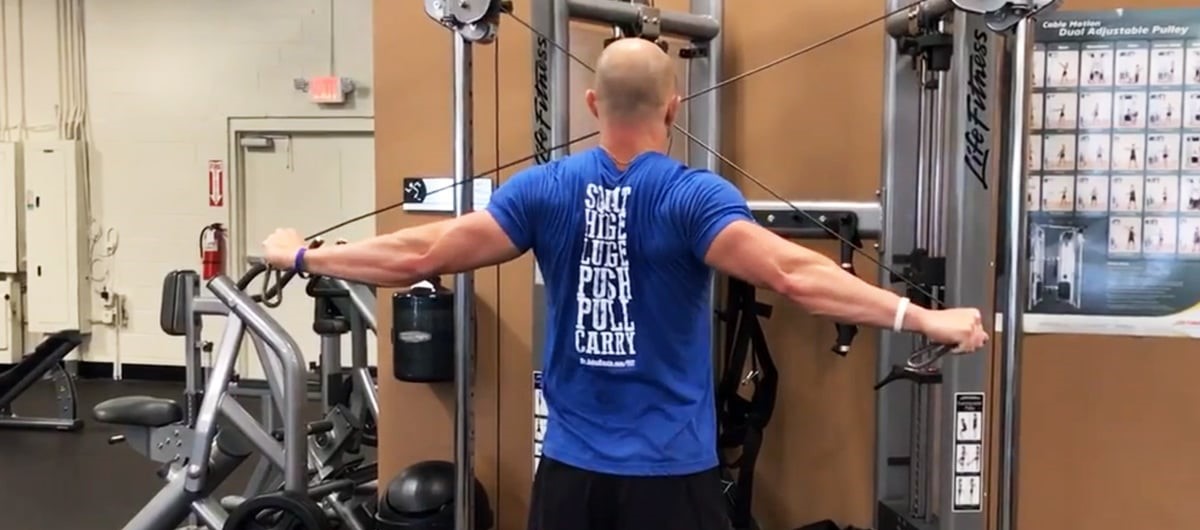
Static Contraction in the Tricep
- One of the distinguishing features of Cable Rear Delt Flyes is the static contraction that occurs in the tricep.
- This unique aspect of the exercise sets it apart from more traditional rear delt workouts.
Here’s how it functions:
- Arm in a Fixed Position: As you execute the exercise, your arm remains in a fixed position. This design ensures that the tricep experiences a static contraction, leading to a different kind of muscle engagement.
- The crowning achievement of Cable Rear Delt Flyes is the outcome they produce. At the end of the contraction, your rear deltoid achieves a state of full flexion.
- This deliberate targeting of the rear deltoid muscle distinguishes Cable Rear Delt Flyes as an exercise that prioritizes the development of this critical area.
Exercise 5: Pre-Exhaust with Bands
- The final addition to our list isn’t your typical exercise with set repetitions. Instead, it’s a strategic approach designed to pre-exhaust your rear deltoids and establish a robust mind-muscle connection.
- This method involves using resistance bands to condition your rear deltoid muscles for better engagement and performance in subsequent exercises.
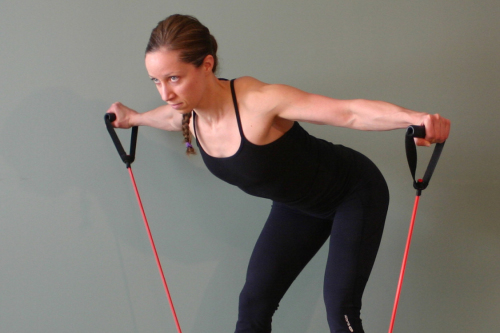
Pre-Exhaust for Rear Delts
- Before diving into the details, it’s essential to understand the concept of pre-exhaustion. This technique aims to target a specific muscle group to the point of fatigue before engaging in more comprehensive exercises.
- By pre-exhausting the muscle, you ensure that it’s actively involved in subsequent movements, even if it’s typically less responsive.
The Procedure:
- Grab a Resistance Band: To begin, select a resistance band with appropriate tension. The band will serve as your tool for pre-exhausting the rear deltoids.
- 20-25 Repetitions: Execute 20 to 25 controlled repetitions of the chosen band exercise. The exact exercise can vary depending on your preference, but it should emphasize the use of the rear deltoids. The objective is to promote blood flow to this muscle group, preparing it for more intense engagement.
Guaranteeing a Strong Connection
- The primary aim of pre-exhausting your rear deltoids is to ensure that you have a solid connection with this muscle group, regardless of the exercise that follows.
- Even if you’ve struggled with rear delt engagement in the past, this pre-exhaustion method can significantly improve your results.
- It’s a smart strategy to maximize the development of your rear deltoids and enhance your overall shoulder training routine.









